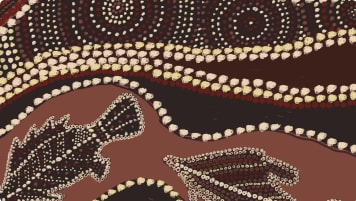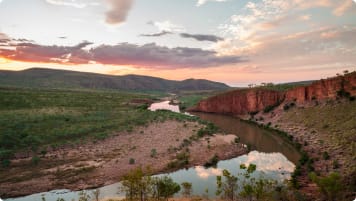Sydney Colonial History for small group tours
Article examines the palimpsest landscape that the British colonial settlement laid down in the 18th century to form New South Wales. Discovery eventually Outback Australia, explorers such as Flinders, Sturt, Stuart and Eyre all passed through Sydney Town that is today the rocks.
4 Jan 22 · 12 mins read
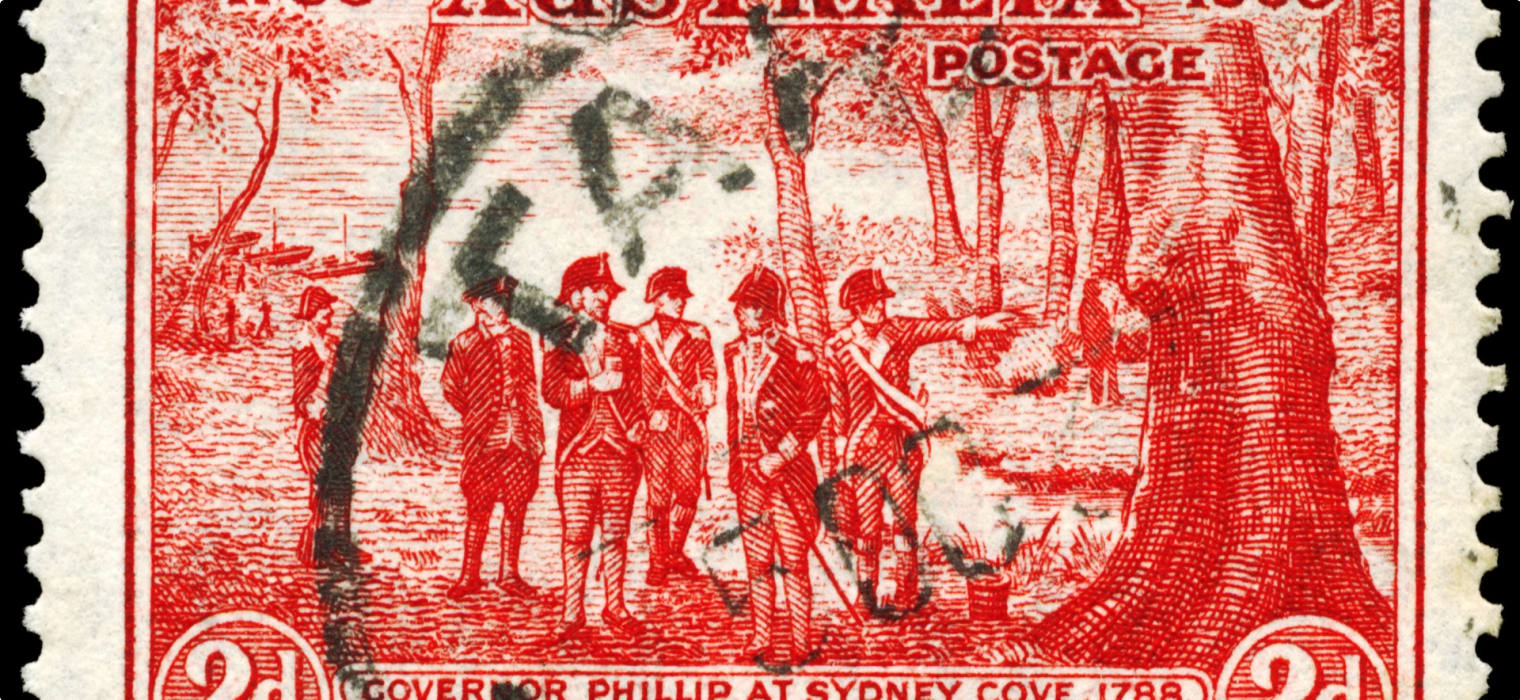
A Forgotten Sydney
Erasmus Darwin was an English doctor and many look to him as one of the key thinkers of his time. Of course, his grandson Charles is better known yet Erasmus happened to be a poet, a noted philosopher, an outspoken slave trade opponent, a botanist and an inventor. His poetry often contains reference to natural history while even a statement on evolution can be found. Certainly, his influence on his grandson appears clear with a theory akin to ‘the survival of the fittest’, among other things, being put forward in his works
Theories are scattered throughout his writing and therein can be discovered even an earlier version of ‘the big bang’. Perhaps one of the most startling though is his poem about early Sydney, believed to have been written less than two years after the foundation of the colony. Read the excerpt below and see what you think.
Where Sydney Cove her lucid bosom swells
Courts her young navies, and the storm repels,
High on a rock amid the troubled air
Hope stood sublime and waved her golden hair;
There shall broad streets their stately walls extend,
The circus widen and the crescent bend.
There ray’d from cities over the cultured land
Shall bright canals and solid roads expand
There the proud arch Colossus-like bestride
Yon glittering streams and bound the chasing tide.
Embellished villas crown the landscape scene,
Farms wave with gold and orchards blush between.
There shall tall spires and dome-capped towers ascend
And piers and quays their massive structures blend.
Unfortunately, the uncluttered foreshore and broad avenues and crescents as seen by Darwin failed to eventuate although that Colossus-like arch he mentions is surely recognisable.
Governor Arthur Phillip, the overall commander of the First Fleet, officially founded Sydney, we are told, on the 23rd of January 1788. The fleet, made up of eleven vessels, had left Portsmouth, England nine months earlier loaded with stores, marines and convicts, mostly male. The First Fleets intended to establish a colony in Botany Bay, the site of Captain James Cook’s landing in his Endeavour almost two decades previously. Arriving there though Phillip believed the site to be unsuitable and decided to continue on to explore a harbour that Cook had given name to but had never entered, Port Jackson. Pushing north from the bay in two longboats Phillip to enter what is now Sydney Harbour making the on-the-spot decision to site the new settlement in a small inlet he named Sydney Cove after his next-door neighbour Thomas Townshead, Viscount Sydney. Some believe this may have been a second choice as there is apparently evidence to indicate he favoured the name of Albion initially.
‘Phillip entered between the lofty headlands to examine Cook’s ‘boat’ harbour and his astonishment may be more easily conceived than described when he found not a boat creek but one of the safest havens in the world, capable of holding every ship in the British Navy. Their the fleet was removed and the British ensign, on 26th January, 1788, was hoisted on the shores of Sydney Cove, then thinly wooded with timber and abounding in kangaroos, but now the infant capital of an embryo empire.’ (History of the British Colonies, 1835)
Phillip’s choice of the settlement site fitted well with an officer of naval background as first of all soundings taken in the harbour revealed it to be deep and apparently with hidden shoals or rocks. A fresh water stream ran down to the harbour front while the reports speak of little undergrowth and numerous large trees indicating a fertile soil. He also realised that by choosing this particular place would afford a good deal of security from enemy attack or bombardment being some eight kilometres from the heads. In addition, any enemy ship would need to move through the area where the harbour’s main channel narrows to a ‘gut’ and would thus be exposed to shore batteries.
The officers aboard the fleet were suitably impressed by the choice although we no nothing of the opinions of the 1000 or so felons being transported here. John White, a surgeon on board Sirius, wrote at length of his impressions.
26th January 1788
‘At ten o’clock Sirius, with all the ships weighed, and in the evening anchored in Port Jackson. I believe this to be without exception the finest and most extensive harbour in the universe, and at the same time the most secure, being safe from all winds that blow.’
When Arthur Phillip decided upon and named Sydney Cove, he too apparently held the vision of a spacious approach to the harbour as he set up, initially his tents and later the buildings, quite a distance from the waterline. The first drawing or plan of the cove area by William Bradley from early March of the same year shows the Governor’s house to be almost 150 metres from the shoreline. There is the strong possibility that Phillip was trying to avoid the creation of a crowded and perhaps ‘seedy’ dockyard area that he had likely experienced elsewhere.
Almost immediately the area of Sydney Cove began to take shape as the main port with a wharf built out from the southern side of the cove likely in the locality of where Customs House is presently located. A shipbuilding dock followed soon, built on the edge of the colony’s fresh water supply, the Tank Stream. Quite surprisingly the dock was able to launch its first ‘Australian-made’ vessel a year later.
There is an early map of the colony entitled something along the lines of ‘A survey of Settlement in New south Wales, New Holland, 1792.’ On this particular map Arthur Phillip had had inscribed his ‘Boundary Line’ proclaiming ‘that no ground within the line be ever granted or let on lease.’ Surely, this indicated his intentions to leave open areas of common land for the good of all. The line ran ‘from the head of the cove which is to the westward of Sydney to the head of Garden Cove – Garden Cove being the second cove to eastward of Sydney Cove, Farm Cove being between the two.’
In other words, Phillip had in one swoop declared all of Sydney’s headlands, from Woolloomooloo to Darling Harbour, as something akin to public parkland or the British common. The area was to be enjoyed by all and sundry apparently without fear or favour. Max Kelly in his 1987 book about Sydney posits that Phillip had foreseen, and was experiencing, the pressure of the scramble for property and trading in this land from the growing population and was attempting perhaps to to put paid to property speculation in the newly established colony.
Sadly for Sydney, the squatters had already begun to carve up property saying that this was there given right. They claimed that they were in fact ‘establishing the colony’ and although the legality of this was most questionable, the offending squatters came from the leading citizens with lawyers, traders, magistrates and politicians all taking part in a thinly veiled speculation.
Sydney was never planned out, never drawn up by an architect or town planner. Originating at Sydney Cove in 1788 and from almost that time the city’s main streets have led from this point to the southern and western areas of the city. The opportunity was never seized upon ‘to decorate the doorstep’ with politicians, the legislators continually disagreeing with whomever they could about money-making additions such as tramways and railways.
Colonial architects such as Francis Greenway and Henry Kitchener made numerous suggestions for the creation of the harbour-front city. A circular or semi-circular quay with a harbour bridge to link the south and north shores was an idea put forward likely as early as 1815. Following closely on the heels of this plan came the well-supported notions of ‘preserving the natural beauty of the cove’, a front garden so to speak to welcome all who entered Sydney by ship.
However, by 1830 the damage had already been done as Sydney rapidly expanded, seemingly without due consideration being given to the ‘natural beauty’ of the cove. The views of the harbour from George, Pitt and other main streets had been obscured. In fact in 1834, a journalist writing for the New South Wales Magazine pointed out in no uncertain terms,
‘It is to be regretted that the first governors of the colony did not lay down a uniform and regular ground plan for the town, combining convenience with ornament. And taking advantage of the beautiful and picturesque character of the site of Sydney by letting the ends of the leading streets, north and south, remain open to a view of the harbour, and of the different coves.’
Another early writer and his works supply a wealth of information about the colonial years of Sydney and other regions. Writing in the early 1820s, Robert Montgomery Martin was an Anglo-Irish traveller, author and a civil servant. Born in Dublin, Martin was trained as a doctor and initially took part in an expedition to Africa before setting out on his own visiting Mauritius, Madagascar, much of the east coast of Africa and some of the islands of the Indian Ocean. He came to New South Wales in the late 1820s before settling for a year in India and from there returning to England.
Martin proved to be a prolific and learned author leaving behind, as a legacy, a great number of works based mainly on early British colonies. In these he provides a vivid snapshot of a fledgling Australia.
‘In placing before my gracious and paternal Sovereign the Fourth Volume of the ‘History of the British Colonies, ‘ I cannot forbear entreating for a moment the attention of the Public to the vastness and importance of the Imperial interests which we are now engaged in investigating.
The vast island of New Holland, or if an Irishism may be hazarded, the fifth quarter of the globe, is one of those recent geographical discoveries which indicate that whatever may be the age of the planet on which we reside, the civilization of man is but of modern creation, or we must suppose that this great southern land has not long emerged, or been left dry by the receding waters of the mighty deep.’
Walking the shores of Sydney Cove today it is almost impossible to trace the architectural and cultural development of this great city. So much has been forgotten, destroyed or built over leaving little or no hope of resurrecting even a fleeting vision of early Sydney and its regions, or so it would seem. Odyssey Travel now begins to unravel the mystery and reveal some of the lesser-known sites of convict and early colonial eras in and around Sydney.
Construction of horseshoe-shaped quay began in 1837 with stone quarried from two of the nearby harbour islands, Goat and Cockatoo, as well as stone from Pinchgut, Fort Denision, and also from the making of the Argyle Cut which was to provide easy passage from the Rocks to Darling Harbour. The new harbour facilities were completed seven years later but by this time the transportation of convicts had ceased. Initially called Semi-Circular Quay, chosen for its distinctive shape, it was developed into a functioning port where ships could load and unload cargo easily from deep-water berths. Understandably, the ‘semi’ prefix was dropped in general conversation from very early on and finally disappeared more or less officially.
As the population of Sydney grew and spread more widely, walking from one point to a distant other on the southern shore or venturing over to places on the north became time-consuming and tiring. Of course, certain people were fortunate enough to have a horse or perhaps even a wheeled vehicle of some description pulled by a horse to make commuting somewhat easier for them at that stage. Later there came coaches and horse-powered buses that could be hired or ridden on for a fare. These horse-reliant vehicles were then replaced by trains and trams but these were in operation long before bridges were built to Pyrmont and Balmain and over to the north shore. Rowing boats and smaller sailing vessels provided the first means of transport across the waterways.
An attempt to get Sydney moving was made in 1838 with the suggestion for a steam-driven ferry service running from Dawes Point, under the present-day southern pylons of the Harbour Bridge. The would-be operators wanted the service to carry not only passengers but also livestock and vehicles. It certainly seemed to make sense but the necessary capital to get the venture up and moving was not to be found and the proposal collapsed.
When the suggestion came up again some fours years later, the Sydney Morning Herald got behind the idea with an article dealing with the benefits of establishing a ferry service over to the north shore.
‘Health, pleasure, convenience and economy will all be promoted by this useful arrangement. A ride to Bradley’s Head before breakfast and between office hours and dinner will become more fashionable than an excursion to Rose Bay.’
Unfortunately though, the writer’s enthusiasm would have been short-lived as the steam ferry service fell through yet again. However soon after a small paddle-wheel steamer, Ferry Queen took up the challenge and set up a run between Millers Point and Blues Point. The steamer towed punts on either side to carry wagons etc with travel time taking considerably longer than the ten-minute jaunt spoken about in the Herald. 1847 saw the Ferry Queen replaced by something larger and a regular steam service between Sydney and the north shore was operating some three years down the tracks.
As is easily imagined the amount of traffic continued to increase so much so that by the middle of the next decade discussions were taking place about bigger and more efficient ferries plying their way across the harbour. It was also probably about this time that certain people began to think about a bridge across to the other side with the proposal for a pontoon-type bridge floated. This idea of this particular type of bridge was not new and in fact fifteen years earlier an attempt was made to raise enough capital by selling shares in the venture for such a bridge. Be careful though when you envision ‘a floating bridge’ as the notion of bridge appears to have been used more as something like a verb. The bridge, I would probably refer to as a punt. In an extremely long sentence the 1854 prospectus provides details.
‘The proposed mode of communication is by means of a floating bridge, propelled by steam and guided by two parallel lengths of chain from shore to shore which will obviate all difficulties and open the desired extension of commercial and agricultural transactions by a continued line of road from Dawes Point across an expanse of water to the opposite shore, hence forming a junction with the town of Sydney, and the fertile lands and country on the North Shores of Port Jackson, superseding the present circuitous route from the capital of about 20 miles.’
There is little doubt that the proposal had merit and likely garnered a good deal of support but 1854 New South Wales and other areas were in the midst of the gold rushes. Most of the excess labour force had left Sydney to seek out their fortunes. It is also likely that the money-making potential for a punt or floating bridge would have been far outweighed by an investment in the goldfields. So needless to say it was a number of years before the punt finally went into operation over to the northern shore where it remained as the most viable option right up to the opening of the bridge in 1932.
Other suggestions for ‘bridging the gap’ came in a number of forms although they were never to be adopted. One such idea was proposed by the vice-president of the Engineering Association, one F. T. Role. His idea was apparently quickly shelved but there can be no denying his intrepid attempt and added to that if it had adopted there is no doubt it would have provided for a bit of excitement for the passengers it conveyed. Role had designed, on paper at least, something like an aerial tramway suspended some twenty metres above the water to whisk up to fifty passengers at a time from one side to the other. It is probably no surprise that there was little or no support given to his suspended carriage especially when an opponent mentioned high winds and the resultant spinning effect on the conveyance.
This article is supported by other articles published by Odyssey Traveller about the early settlement of Sydney including the islands within the new harbour.
About Odyssey Traveller.
Odyssey offers small group tours for mature and senior couples or solo travellers to Sydney and new South Wales and many other destinations in Australia.
Odyssey started in 1983 as a collaboration between the Universities of Australia and New Zealand in the continuing adult education market, so it is almost 40 years old. The company has been stewarding fellow travellers on an ever-expanding collection of diverse and curious small group tours. Tours are supported by a great group of leaders who are typically retired academics and schoolteachers with a passion for continuing to be curious and sharing knowledge with you.
Small is Beautiful – Economics as if People Mattered is a collection of essays by E F Schumacher published in 1973. He sets out the case for the community, not corporations, as the model for economic success. It influences us in all we do. For Odyssey Travellers, the term small is beautiful, captures the essence of the experience offered. We endeavour:
- to provide touring programs that stimulate the mind, ideally changing perspectives and perceptions through travel and shared knowledge,
- to offer small groups for like-minded people to explore,
- to foster a collegiate, open touring platform encouraging friendships to be made and journeys shared,
- to tread softly in the places we visit and not overwhelm the art galleries, museums, environment, or accommodation we use.
As a small team, we are orientated to learning about you the traveller, ensuring you are treated the way you wish to be treated, following the adage “treating others how you wish to be treated yourself”. When you travel with us, you may be part of a small group, typically 8-14 people, and be part of a small business group that averages some 40 people per week travelling with us all around the world. Our scale of operation and our tours anywhere in the world are orientated for the selective few, not the many.
By travelling with us, you assist us in supporting, each year, at least one academically bright University student who might be struggling financially to continue their studies, with a scholarship to underpin those studies for at least one year.
Related Articles

Why did the British settle Australia?
Escorted small group tours for mature and senior travellers that promote aboriginal and colonial history discussion on tour. For couples and solo travellers interested in learning about Aboriginal history and the colonial explorers across the states.
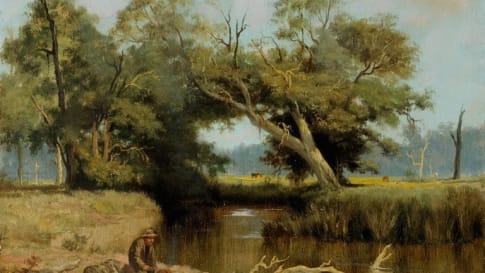
Winton and Dinosaurs, Queensland
Small group tour for senior and mature travellers to Outback Queensland includes Winton and its Dinosaurs as well as Longreach, Cathedral Gorge and Aboriginal art, & Barcaldine.

The Arrival of Aboriginal Australians on the Continent
Tracing Aboriginal history via an outback small group tour for mature and senior couples or solo travellers provides an intriguing learning platform about Australia, rock art, trading and culture that traces a history possibly some 120,000 years ago.

The Rocks, Sydney
Article about Sydney's historic Rocks area. An integral part of an escorted small group tour of Sydney for mature and senior travellers seeking as a couple or solo traveller to learn more about Sydney, New South Wales and Australia deep Aboriginal and recent colonial history.
Additional articles series
Related Tours
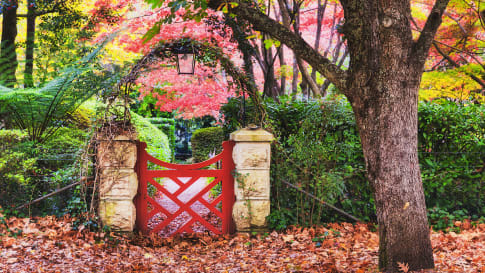
days
AprAutumnal small group tour of the Blue Mountains
Visiting New South Wales
Spend a week in the Blue Mountains outside Sydney exploring the historic homes and gardens of the region over a week. For mature and senior travellers. This small group tour visits 13 very different homes and gardens during the Autumn.
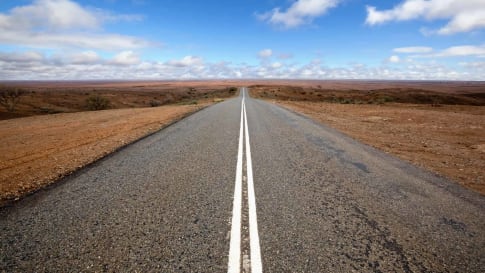
14 days
Apr, Jun, SepEscorted small group tour of New South Wales and Victoria
Visiting New South Wales, Victoria
Discover the Brewarrina fish traps, the World Heritage Site of Mungo man and lady stopping in Mungo National Park and other significant locations such as Broken Hill. Then continue through the Victorian goldfields as well as Mildura and Canberra. A small group tour for senior couples and mature solo travellers to the edge of Outback Australia.
From A$10,615 AUD
View Tour
14 days
Mar, May, Jun, Jul, Aug +3Escorted small group tour of Western New South Wales
Visiting New South Wales
Discover the the Brewarrina fish traps, Aboriginal art at Mt Grenfell and visit the opal fields of White Cliffs. This small group also visits the World Heritage Site of Mungo man and lady stopping in Mungo National Park and other significant locations such as Broken Hill.
From A$9,250 AUD
View Tour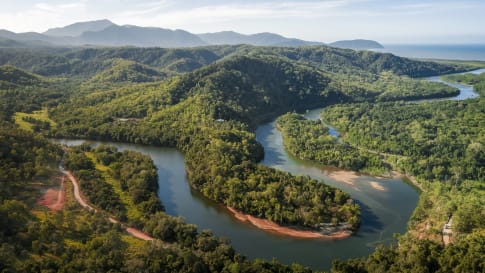
7 days
Sep, Apr, OctExploring the Hawkesbury-Nepean River small group tour
Visiting New South Wales
Explore the Hawkesbury river region with a small group tour for mature and senior travellers, travelling as a couple or solo travellers . Learning about the Aboriginal outback and contemporary art. as you travel up and down and beside the Hawkesbury river.
From A$5,150 AUD
View Tour
days
Mar, Apr, Jun, Jul, Sep +1Guided small group Motorcycle tours of Western New South Wales
Visiting New South Wales
Motorcycle tours of Western New South Wales. Discover the the Brewarrina fish traps, Aboriginal art at Mt Garrett, learn about the opals of White Cliffs. This small group also visits the World Heritage Site of Mungo man and lady stopping in Mungo National Park and other significant locations such as Broken Hill.

7 days
Nov, Feb, Mar, Apr, Sep +1Small group tour to Southern Highlands and Canberra
Visiting Australian Capital Territory, New South Wales
Explore and learn on an escorted small group tour of key places to visit in NSW including the Southern Highlands and Canberra. Program for mature and senior travellers limited to 12 people for couples and solo travellers.
From A$3,750 AUD
View Tour
14 days
Oct, AprThe Darling River Run small group tour
Visiting New South Wales, Victoria
Small group tour for the mature and senior traveller of the Darling River. Learn about the history, culture and landscapes of the Darling, a key part of the Australian river system including Aboriginal trading routes and aquaculture. Suitable for mature and senior couples or solo travellers.
From A$10,750 AUD
View Tour